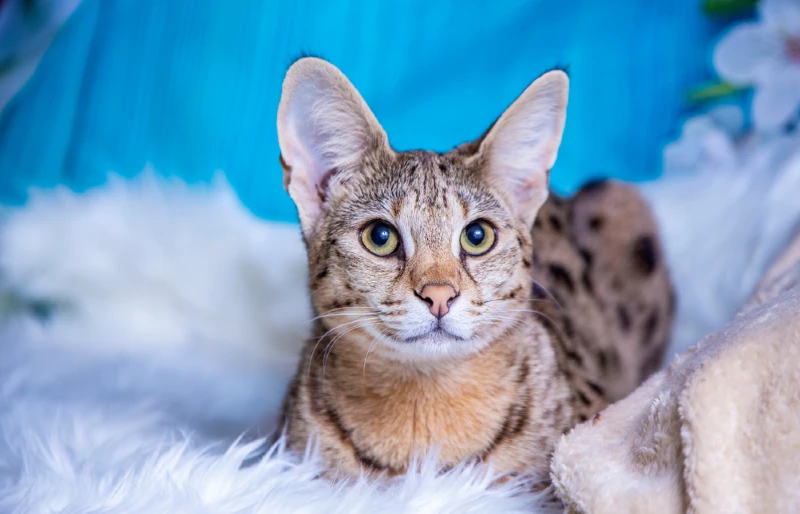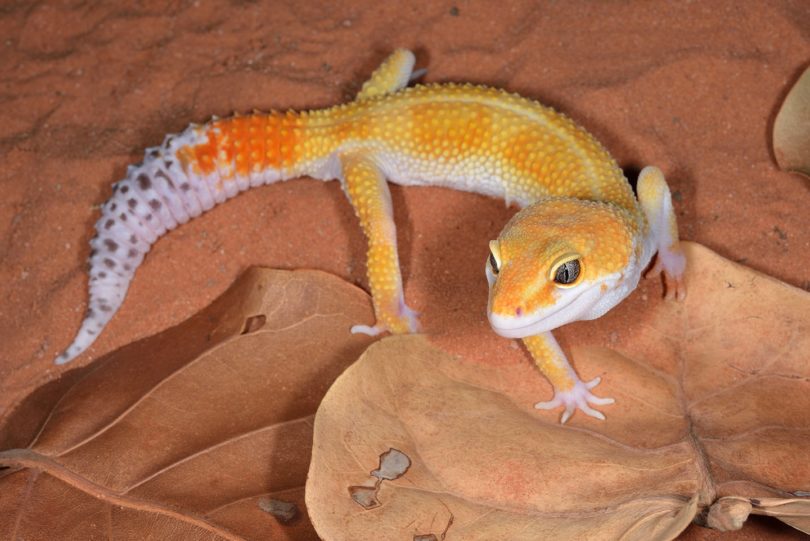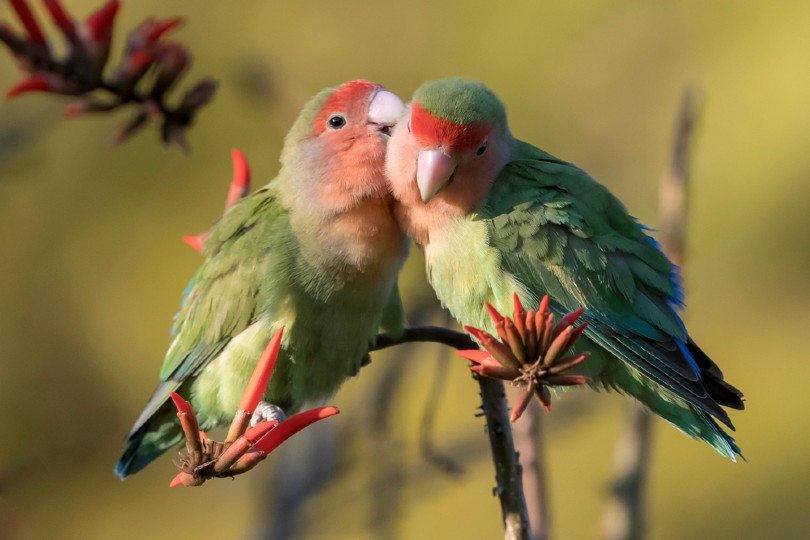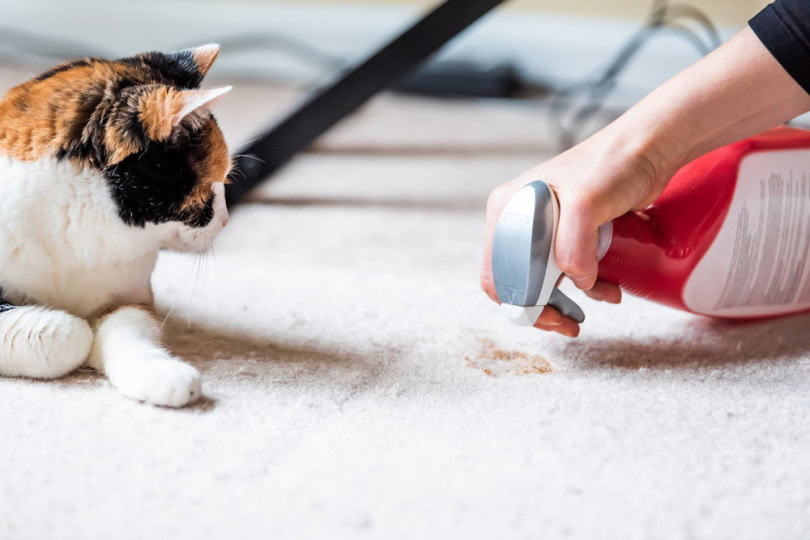VET APPROVED

The information is current and up-to-date in accordance with the latest veterinarian research.
Learn more »Click to Skip Ahead
The Savannah cat is strikingly agile and strong, with an adventurous and outgoing nature. These cats feature unique characteristics because they are a hybrid cat, a cross between a domestic cat (Felis catus) and an African Serval (Leptailurus serval). The breed originated in the 1080s when, according to the Savannah Cat Association, a Siamese female mated with a serval male. Currently, The International Cat Association (TICA) recognizes the breed, but the Cat Fanciers’ Association (CFA) does not, and they are banned or heavily regulated in certain territories of the U.S. and countries such as Australia or New Zealand.
But are Savannah cats actually dangerous? The answer depends on several factors, including their generation, upbringing, and environment. While they are not inherently aggressive, their wild ancestry gives them high energy levels, strong hunting instincts, and specific environmental needs. Without proper socialization and care, they can become difficult to manage, especially in homes unprepared for their unique behaviors. For this reason, Savannah cats are best suited for experienced owners who can meet their needs and provide an enriched and calm environment.

Why Do Savannah Cats Look So Dangerous?
Compared to other house cats, the Savannah’s slender and tall body looks imposing. The cat can reach a height of 19 inches, as in the wild, the serval must be tall to make long leaps toward their prey.
Other features are extra-large ears and spotted bodies, which are also not common in domesticated animals. Additionally, Savannahs with serval genes hiss or growl, a mode of communication when the cat is excited and happy.
While the cat may look terrifyingly large, don’t be misled by their outward appearance. A Savannah cat is generally passive and not dangerous, especially in later generations.
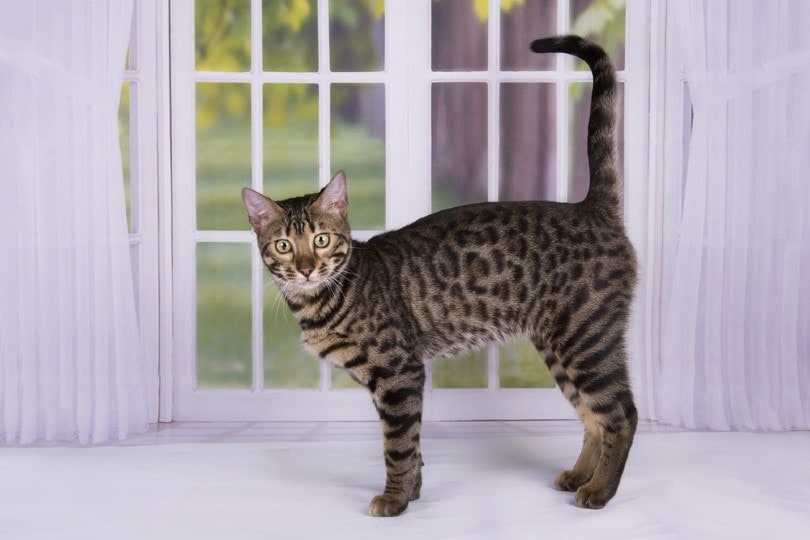

Is Owning a Savannah Cat Legal in the USA?
Rules and regulations behind the ownership of a Savannah are restricted to the state level. But they must meet guidelines set by the Department of Agriculture and Fish and Wildlife Services.
States that allow ownership of all generations of Savannah cats:
Alabama, Arizona, Arkansas, California, Connecticut, District of Columbia, Florida, Idaho, Illinois, Indiana, Kansas, Kentucky, Louisiana, Maine, Michigan, Minnesota, Mississippi, Missouri, Montana, Nevada, New Jersey, New Mexico, North Carolina, North Dakota, Ohio, Oklahoma, Oregon Pennsylvania, South Carolina, South Dakota, Tennessee, Utah, Virginia, Washington, West Virginia, Wisconsin, and Wyoming are the states that allow all generations of Savannah cats in 2025.
States that have control over ownership of Savannah cats:
In Alaska, Colorado, Massachusetts, New Hampshire, Vermont, New York, and Iowa, F4 Savannahs are allowed without a license. However, in some city limits, such as Denver and Seattle, cat ownership is banned despite their respective states allowing them in countryside regions and areas around small towns.
In Maryland, all generations of the cat are allowed, provided their weight is less than 30 pounds.
Lastly, in Texas, some counties that allow ownership are Bell, Ward, Lubbock, Mason, Guadeloupe, and Harris. Montgomery County regulates the ownership of F1, F2, and F3 cats. Unfortunately, most of the state’s 254 counties have banned Savannah cat ownership. The same ban also spills over to breeders.
States that do not allow the ownership of Savannahs:
It is illegal to have a Savannah cat in Georgia, Hawaii, Nebraska, and Rhode Island.
Note: With more and more people lobbying for exotic animals, some of the states with the strictest laws on Savannah cats may loosen the regulations. Visit your state’s resource center to find out more about the cat’s ownership.
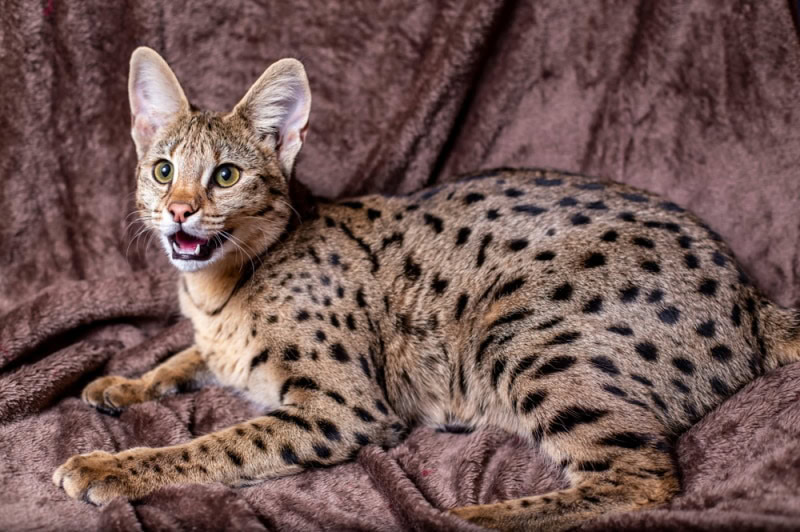

Why Are F1, F2, and F3 Cats Regulated in Many States?
Generations of Savannah cats are commonly known as F1, F2, and F3. An F1 Savannah is born by breeding a wild serval and a domestic cat, so the cat’s genes are 50% of that of a wild serval. With a serval being known for its strong hunting skills and aggressiveness towards other pets, you don’t want your domesticated Savannah cat to have those skills. Unfortunately, F1 cats are still somewhat wild, and this might be one of the reasons legislators don’t want them in family settings.

Conclusion
Savannah cats are considered safe as there are practically no reports of injuries despite their imposing appearance. The cats are tall, slender, and have playful personalities. However, some generations are illegal or restricted in many states. So, before buying one, make sure you have the right permits.
- Are Savannah Cats Dangerous? What To Keep In Mind | Purr Craze
- Texas Counties
- States That Allow Savannah Cats ⋆ Complete list
- Savannah Cats: Facts, Details, and Breed Guide | Litter-Robot
- Is it true that wild cats that people own, like African servals and caracals, use hissing as a form of affection? – Quora
- Tallest domestic cat ever | Guinness World Records
- Savannah Cat History the eighteen founders who began the breed
Featured Image Credit: Kolomenskaya Kseniya, Shutterstock
